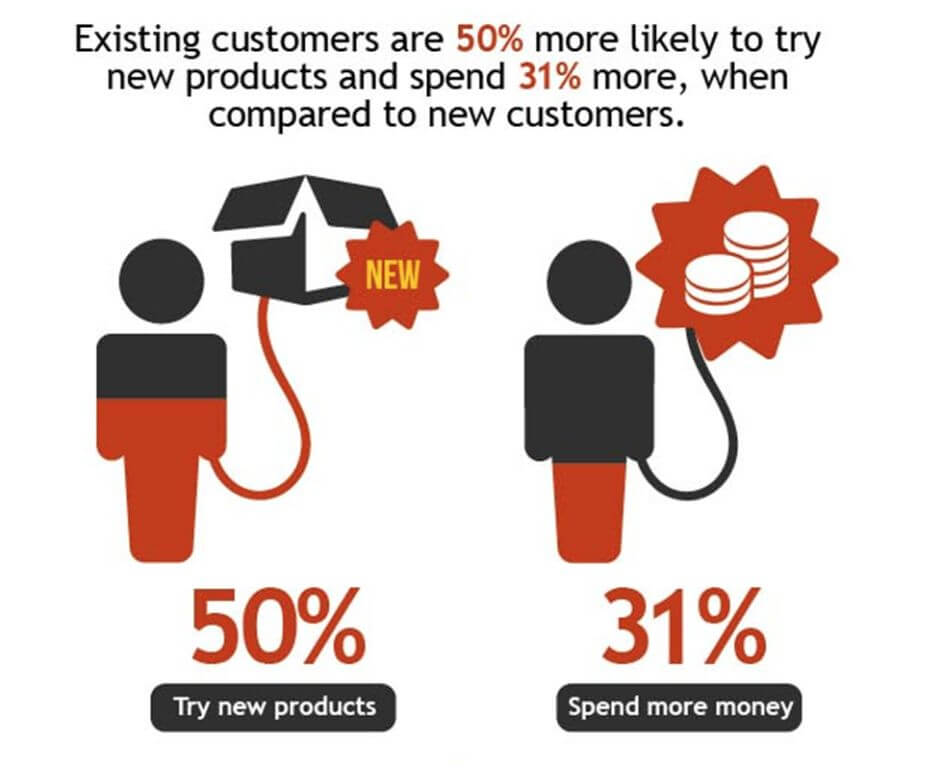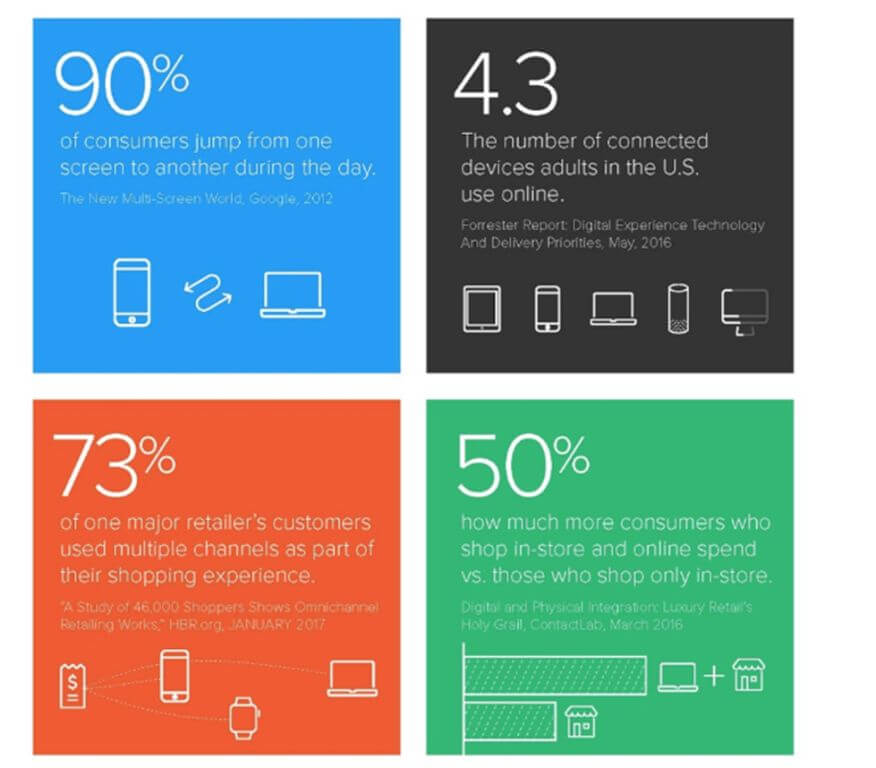When it comes to building and growing an online store, it’s not enough that you’ve got a highly original business idea and great products that some people want to buy. The key to growth and success is being able to crunch the data so that you’re always on top of what’s working and what isn’t, as well as how different customers react to different marketing strategies.
A/B testing is one way of performing experiments that bring us closer to the “perfect store”. But there is another method of analyzing data that can be used both synchronously and separately with A/B testing and that is cohort analysis. In fact, all eCommerce merchants need to be carrying out cohort analysis to greatly improve their conversion rates.
In this article, we’re going to take a look at what cohort analysis is, as well as how it can help your eCommerce strategy.
What is a Cohort?
Put simply, a cohort is a group of people (or shoppers) who are bound together by a specific characteristic. This characteristic is often, for example, a certain action that was carried out at a certain time.
Let’s say that I run a promotion in my store and create a cohort based on the shoppers who took advantage of my promotion. I then track their behavior over the next few months to see how effective my promotion was at turning this particular cohort into repeat customers.
Defining a Cohort Analysis
As mentioned, cohort analysis is essentially the practice of studying the activities or habits of specific cohorts over a set period of time. I could segment my cohort by month after an email sign-up and track their data to see how frequently they’re purchasing, and what effect my marketing activities for that month have had on my new customers.
Why perform a cohort analysis? Because without it all you can’t see the big picture. This means you’d miss out on key metrics, such as order velocity. Moreover, you won’t get to see how specific customers are reacting and interacting with your products over time.
Fundamentally, cohort analysis is all about tracking the behavior of existing customers and then using the data to create better marketing campaigns so that you don’t have to waste money acquiring new customers all the time. Studies have even shown that it’s much more cost-effective for eCommerce stores to retain existing customers than acquire new ones, and this is what cohort analysis helps with.

What type of metrics should a cohort analysis track?
1) Retention Rate
All eCommerce merchants need to track the retention of their customers. For your store to remain healthy and sustainable over the long term, you need to hold onto customers.
2) Repeat Rate
Retention rate measures whether or not a customer comes back to you, while repeat rate measures how often they come back to you. Of course, a good repeat rate will depend on what you sell. If you sell mattresses, you can hardly expect a customer to come back more than once every few years, for example.
3) Average Order Value
This metric tracks how much, on average, a customer spends each time they visit your store.
4) Customer Lifetime Value
There are a few methods that you can use to gauge how valuable your customers are worth to your eCommerce store over the long term. A simple way to calculate this metric is to subtract the total revenue you earned from a customer with the amount of money that your business spent to acquire them.

5) Customer Acquisition Cost
The bottom line is that if it’s costing you more to acquire a customer than you’re actually making from sales, you’re losing. Divide your monthly marketing spend by the amount of new customers you acquired that month to see where you’re at. Let’s take a look at the types of cohort analyses you can perform:
Assess Changes To Your Website
Let’s say you decide to make changes to your landing page. Marketers can quickly and easily do this on the fly with a WordPress page builder, and without having to learn any coding skills or having to work with a web designer. Perhaps you’ve changed your headline, added a different image or reworked the body copy. Or maybe you’ve gone with a new CTA.
Unless you then create a cohort to see how customers are interacting with your store for, say, three months after you’ve made your changes, you won’t know how effective your changes are.
This is key because we need to know if our customers are responding positively to any changes we make.
You can also segment your customers into different cohorts to see which types of customers respond better to your changes than others. For example, are loyal customers more responsive to the changes than new ones? Or have your changes deterred loyal customers?
Moreover, how has your conversion rate changed since you implemented the changes?
Assess the Different Stages in the Customer Lifecycle
If you can define cohorts according to the customer lifecycle stage, you can see more clearly what turns a first-time shopper into a loyal customer over time, as well as what doesn’t.
It’s a good idea to use a time-frame of up to at least a week for this one, because a customer needs a bit of “breathing space” before you can properly assess whether they’re going to be a long-term customer, or whether they’re going to churn.
This cohort analysis will give you a sounder idea of what makes a customer loyal, thus ensuring that you stop less future customers from getting away.
Let’s imagine that I grouped customers by “lifecycle stage.” I used the metric “total revenue” over, say, 1 month, and found that it’s during the 3 weeks months that my new customers are at their most valuable to me.
Assess Online and Offline Preferences
Do customers prefer to buy online or offline? If they prefer to buy online, why?
An online store can produce different results to an offline store, and it’s important that you understand why. By breaking down your customers according to online and offline preferences, you can identify the reasons as to why customers might prefer shopping online or offline.
For example, it could be that customers are more engaged offline because they’re able to talk to an assistant who helps to solve any issues they have.
In that case, you may want to consider creating an omni-channel shopping experience for your customers by allowing them to also purchase offline. It may also boost your profits, with studies showing that consumers who shop both in-store and offline spent 50% more than those who only shop in-store.

Or it could be that the payment options in your online store aren’t satisfactory. In that case, you could need to look at how to make the buying journey easier for the customer.
Determine How Effective Promotional Campaigns Are
This cohort analysis is a fairly easy one to perform. You will essentially segment customers acquired during a month when you run a promotional campaign, vs customers acquired during a month when you didn’t run a promotional campaign.
If the amount of customers you gained for both months is roughly the same, it tells you that your promotional campaign is ineffective and needs reworking.
Moreover, you can also find out how effective your promotional campaigns are at creating loyal customers.
For example, if you ran a promotional campaign in December and acquired 34% new customers than usual, you’ll probably be happy about that. But if it then transpired that they almost totally dropped off by May of the next year, it means that you need to improve your subsequent marketing campaigns to retain customers acquired off the back of a promotional campaign.
Conclusion
Hopefully you’re now in a position where you understand cohort analysis better, as well as what it can do for your eCommerce store. The more cohorts you create, the more you analyze them, the stronger your marketing campaigns will be.